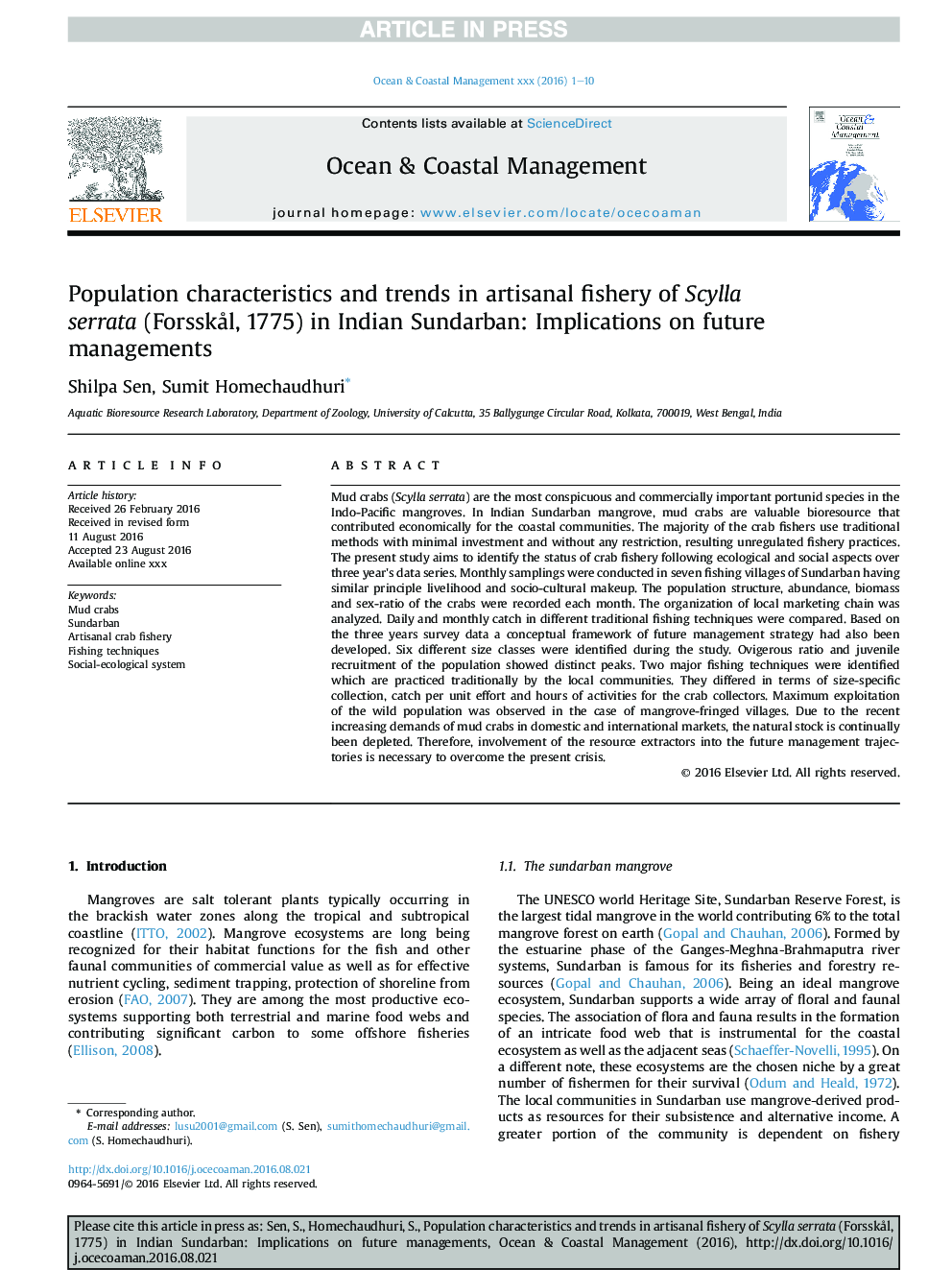| Article ID | Journal | Published Year | Pages | File Type |
|---|---|---|---|---|
| 5473780 | Ocean & Coastal Management | 2017 | 10 Pages |
Abstract
Mud crabs (Scylla serrata) are the most conspicuous and commercially important portunid species in the Indo-Pacific mangroves. In Indian Sundarban mangrove, mud crabs are valuable bioresource that contributed economically for the coastal communities. The majority of the crab fishers use traditional methods with minimal investment and without any restriction, resulting unregulated fishery practices. The present study aims to identify the status of crab fishery following ecological and social aspects over three year's data series. Monthly samplings were conducted in seven fishing villages of Sundarban having similar principle livelihood and socio-cultural makeup. The population structure, abundance, biomass and sex-ratio of the crabs were recorded each month. The organization of local marketing chain was analyzed. Daily and monthly catch in different traditional fishing techniques were compared. Based on the three years survey data a conceptual framework of future management strategy had also been developed. Six different size classes were identified during the study. Ovigerous ratio and juvenile recruitment of the population showed distinct peaks. Two major fishing techniques were identified which are practiced traditionally by the local communities. They differed in terms of size-specific collection, catch per unit effort and hours of activities for the crab collectors. Maximum exploitation of the wild population was observed in the case of mangrove-fringed villages. Due to the recent increasing demands of mud crabs in domestic and international markets, the natural stock is continually been depleted. Therefore, involvement of the resource extractors into the future management trajectories is necessary to overcome the present crisis.
Keywords
Related Topics
Physical Sciences and Engineering
Earth and Planetary Sciences
Oceanography
Authors
Shilpa Sen, Sumit Homechaudhuri,
